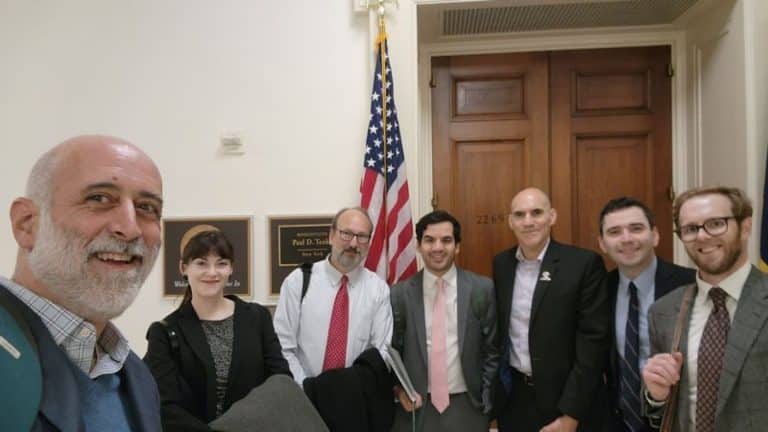Earlier today, I testified before the Tennessee Legislature’s Government Operations Joint Committee on the importance of the Clean Power Plan and its significance for Tennessee. As you can see by the line up, I was the sole representative of the clean energy advocacy community on this panel:
- Paul Bailey – American Coalition for Clean Coal Electricity
- Mike Knotts – Tennessee Electric Cooperative Association
- Amy Martin – Tennessee Chamber of Commerce and Industry
- John Myers – Tennessee Valley Authority
- Gary Garrett – Southern States Energy Board
- Kendra Abkowitz – Tennessee Department of Environment and Conservation
- Stephen Smith – Southern Alliance for Clean Energy
My prepared remarks are shared below.
————–
 Good afternoon. My name is Dr. Stephen A. Smith. I would like to thank the Government Operations Joint Committee for allowing me the opportunity to provide comments on the Clean Power Plan and a few thoughts about what it means for Tennessee.
Good afternoon. My name is Dr. Stephen A. Smith. I would like to thank the Government Operations Joint Committee for allowing me the opportunity to provide comments on the Clean Power Plan and a few thoughts about what it means for Tennessee.
I am appearing before you today first as a father and grandfather: I have three sons and two grandsons. I’m deeply concerned about the world we will be leaving them. Professionally, I am a graduate from the University of Tennessee College of Veterinary Medicine, and believer in good science.
I have served as the executive director of Southern Alliance for Clean Energy since 1993, and am a past chairman and current board member of the U.S. Climate Action Network.
I currently serve on the Tennessee Valley Authority’s Regional Energy Resource Council, which advises the TVA Board of Directors and have served on TVA’s Integrated Resource Planning Review Group. And I’m a concerned citizen of the great state of Tennessee.
Southern Alliance for Clean Energy strongly supports the Clean Power Plan, and encourages the State of Tennessee to work constructively toward developing a compliance plan to take advantage of the many opportunities it presents. The Clean Power Plan is flexible, allowing states many different ways to comply. It is measured in its timing, and the goals it sets forth are modest and achievable. It has also been developed with an unprecedented level of stakeholder input, and the final rule effectively balances the concerns of the many different stakeholders.

This past May, I was proud to join Vanderbilt University School of Medicine and Law School in co-hosting a conference entitled, “The Clean Power Plan: Health, Energy Demand and Economic Effects.” Policymakers, scholars and practitioners from several disciplines presented abundant evidence that the Clean Power Plan will provide significant human health benefits by reducing deadly particulate pollution and other emissions from coal-burning power plants.
Dr. Matthew Freiberg of the Vanderbilt School of Medicine noted that the World Health Organization has ranked exposure to particulate matter, a major air pollutant from coal plants, as the 13th leading cause of death worldwide. [Videos of all speakers can be viewed here.]
Air pollution continues to be a serious problem in our state. Tennessee currently has six counties that are out of attainment for particulate matter pollution, threatening the health and lives of people living in those areas, and the American Lung Association’s 2015 Report Card gave 11 counties in Tennessee grades of an F or a D. In fact, Memphis is currently ranked as the worst place in the country for asthma sufferers according to the Asthma and Allergy Foundation of America.
Unfortunately, asthma disproportionately affects the most vulnerable members of society, like children and the elderly. In a letter to the editor that appeared in The Tennessean on June 17, Dr. Donald H. Arnold, Associate Professor of Emergency Medicine and Pediatrics at Vanderbilt University, noted that climate change is most dangerous for Nashville’s children since they breathe more rapidly than adults and “inhale more pollutants per pound of body weight.”
The good news is that the Clean Power Plan represents a real opportunity to reduce and prevent the health impacts of climate change and air pollution.
In addition to limiting carbon pollution, the rule will lower the emissions that contribute to soot and smog, and can lead to more asthma attacks in children, by more than 70%.
Beyond the public health benefits, the Clean Power Plan will also provide significant economic benefits, including lower utility bills. Thanks largely to the inclusion of cost-effective energy efficiency as a compliance option, it is estimated that the Plan will reduce the average American family’s utility bills by almost $85 per year, saving customers $155 billion from 2020-2030.
Local governments in Tennessee have already seen major dividends on recent investments in energy efficiency. For example, Memphis was able to reduce its energy use at its downtown City/County building by almost 50% thanks to a 2009 efficiency retrofit. A 2008 project to upgrade Knoxville’s traffic signals to LEDs is saving $250,000 per year, and the City is considering a LED streetlight retrofit that is estimated to cut energy usage by 48% and save taxpayers nearly $2 million per year. These are only a few of many examples. Cutting energy waste is good government policy and good environmental policy.
 The Clean Power Plan is also about job creation. Already, Tennessee is home to nearly 45,000 clean energy jobs according to a report released in July by Environmental Entrepreneurs. [Each committee member was provided a copy of the study.] Our state has one of the highest rates of clean energy job creation, at 6.3% job growth last year, compared to a 2.2% overall job growth rate in the state. Particularly strong is our clean-energy manufacturing sector, and Tennessee stands to reap large benefits as the Clean Power Plan drives demand nationwide for Tennessee-made clean energy products. Clean energy jobs are also good-paying jobs, with wages that are 13% above the median U.S. wage.
The Clean Power Plan is also about job creation. Already, Tennessee is home to nearly 45,000 clean energy jobs according to a report released in July by Environmental Entrepreneurs. [Each committee member was provided a copy of the study.] Our state has one of the highest rates of clean energy job creation, at 6.3% job growth last year, compared to a 2.2% overall job growth rate in the state. Particularly strong is our clean-energy manufacturing sector, and Tennessee stands to reap large benefits as the Clean Power Plan drives demand nationwide for Tennessee-made clean energy products. Clean energy jobs are also good-paying jobs, with wages that are 13% above the median U.S. wage.
Put in proper perspective, there are about 150 clean energy jobs for every coal-mining job in Tennessee. According to the Energy Information Administration, a total of only 297 Tennesseans were employed in the coal-mining business in 2013.
It is important to remember that TVA’s current long range plan is already moving in the Clean Power Plan’s direction. This is not because of EPA’s overreach; it’s because of technological and market forces that have allowed low natural gas prices to out-compete higher-priced and less efficient, older coal facilities. TVA is responding to these market dynamics.
The hyperbolic “sky is falling” rate impacts are not supported by TVA’s own planning forecast, which project minimal impact on electric rates from compliance with carbon regulations and increased deployment of energy efficiency and renewable energy.
Indeed, earlier this year, TVA’s management shared industrial recruiting information with the RERC membership showing that in addition to stable rates, the downward slope of TVA’s future carbon emissions projections are becoming an increasingly important recruitment tool to many corporations as they look at managing their carbon footprint. Tennessee is well positioned to have a competitive advantage over neighboring states on these issues.
In closing, Tennessee voters agree that we need to take action on climate change. A poll conducted last year by the conservative polling firm North Star Opinion Research documented that 68% of Tennessee voters believe that it is a good idea for the EPA to require Tennessee power plants to reduce the amount of carbon pollution they release, including 62% of registered Republicans.
The question before the leadership of Tennessee is simple. Do we want to embrace a clean energy future and have our state be a leader in technology and innovation? Or do we want to cling to old, dirty technologies whose days have past?
Thank you.


